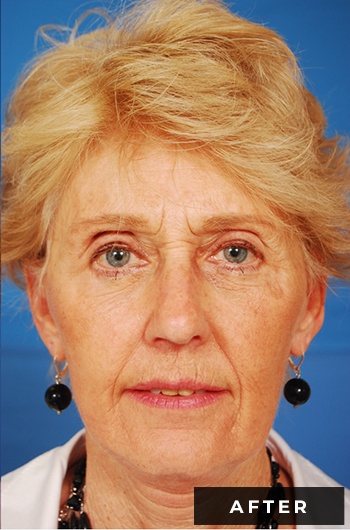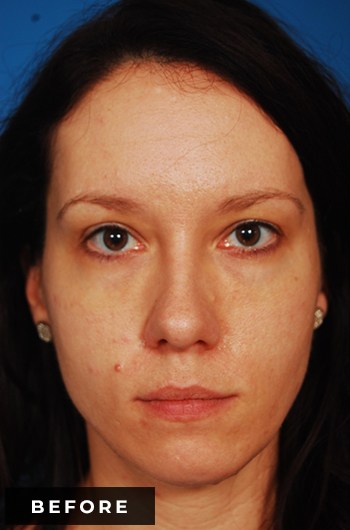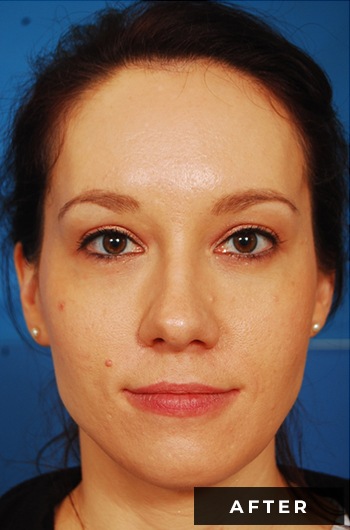3800 Reservoir Rd, 1st Floor Gorman
Washington, DC 20007
6862 Elm St, Suite 800B
McLean, VA 22101
Lower blepharoplasty (BLEF-a-roe-plasty) is surgery to enhance the appearance of the lower eyelidsa
Clinical evaluation begins with the assessment of your specific eyelid anatomy and your desires for improvement. Dr Reilly will then work with you to create a plan that aligns your goals with potential surgical treatments based on your anatomy.
Generally, this type of surgery is done to remove “bags” and excess skin under the eyes to promote a more youthful and well-rested look.
The technique for removing under eye “bags” involves an incision inside the lower eyelid. In patients with excess lower eyelid skin, an additional incision is made immediately below the eyelashes on the outside of the lid.
Most patients take one week off work, followed by another week of reduced activity. There will be bruising and swelling for 7-10 days. After 2 weeks, you may resume full activity.
A lower blepharoplasty procedure is when a head and neck surgeon removes excess skin from the lid below your eyes. This procedure is typically performed for cosmetic purposes, to remove “bags” from under your eyes and to promote a more youthful and well-rested look.
Lower eyelid blepharoplasty surgery can be performed in the operating room under general sedation or in the clinic with local anesthetic. An incision is made inside the lower eyelid to hide any scarring in your natural anatomy. If you have excess skin below your eyes, an additional incision is made immediately below your eyelashes on the outside of the lower eyelid.
We recommend taking a full week off of work or school to adequately rest and recuperate from your lower eyelid surgery. We will see you in the clinic one week after your surgery to ensure everything is healing properly and to remove any sutures. Depending on your occupation, you may be feeling up to returning to work after that first week. You should expect to be taking it easy for the first two weeks after surgery; we recommend no heavy lifting or strenuous exercise for a full two weeks. Avoid any rigorous exercise or contact sports for six full weeks after this lower eyelid procedure.
Typically, procedures that are cosmetic in nature are considered “elective” by insurance companies. After your consultation with Dr. Reilly, you will be provided a personalized quote based on the scope of work discussed in your visit. Often, patients see less out-of-pocket costs for procedures performed in a lower cost setting, such as our clinic. We have a team who will help navigate you through the scheduling process.




Background
Lower blepharoplasty is surgery of the eyelids wherein fat and excess skin, bags, pouches, wrinkles in the under eye area are removed to make the eyes look refreshed. Recovery time is approximately one week.
Eyelid evaluation
Dr. Reilly will perform an in-depth analysis of your eyelids in an open and closed position, as well as with your eyes looking up, straight ahead, and down. The lower eyelid evaluation includes assessment of any bulging fat from the area below the eye in each of three compartments (medial, central, and lateral) as well as an assessment of the quality, redundancy, and strength of the lower eyelid skin and connective tissue.
In the vast majority of patients, the desired aesthetic result is readily achieved. However, the possible complications of blepharoplasty surgery include but are not limited to the following: Infection, bleeding, swelling, scarring, numbness, skin discoloration, asymmetry, change in eyelid position, change in eye shape, displeasure with the cosmetic outcome, and allergic or other negative reactions to one or more of the substances used in the operation. In rare cases, compromise in vision has been reported.
For lower blepharoplasty, the incision is typically made either inside the eyelid, or at the line immediate below the eyelashes. In order to correct issues with redundant skin and laxity, a conservative pinch of skin is typically taken from this area and the edges are sutures back together with a thin, absorbable suture. If the patient has any evidence of weakness of the lower eyelid tissues, a permanent suture can be placed to secure this to the orbital bone (eye socket) in order to minimize the risk of scarring creating a more open/rounded appearance to the lower eye.
For the “bags”/bulging fat from below the eye, the fat can either be directly removed or it can be repositioned into the tear trough below the eye using sutures to hold it in place for a week after surgery. These sutures are placed from inside the eyelid out to the facial skin and secured down to the tear trough over an antibiotic gauze to allow a week of healing in place. The gauze/sutures are then removed at the first post-operative visit.
You may be up and around and able to go to the bathroom. You will be able to eat a light meal with assistance.
Take medication only as directed.
Some swelling, bruising and tightness of the tissues are normal occurrences.
Place ice packs on the eyelids for the first 48 hours (on for 20 minutes, then off for 20 minutes).
Avoid eye strain. Reading and watching TV may begin the next day.
Swelling and discoloration are greatest on the 2nd or 3rd day.
Sutures are generally dissolvable.
Apply antibiotic ointment to the white of the eyes twice daily for 5 days
Visual blurring can be caused by the ointment in your eyes. Any decrease in vision associated with swelling,
bleeding, increased pain or bruising should be checked immediately by Dr. Reilly.
Please call (202) 444-0757
You will come into the office for a post-operative check-up.
No alcohol for the first 7 days after surgery, which can increase bruising and swelling
Your swelling and bruising will gradually fade over this time period.
You will come in for another post-operative check-up 4-6 weeks after surgery.
Long term:
Rest and good nutrition are important healing factors, especially during the first 6 weeks.
Tearing, itching, burning, tightness, and puffiness are normal during the healing process. Complete healing takes 6-12 months.
You may apply makeup to conceal bruising, but be sure to avoid anywhere near the incision lines for at least 10 days after surgery.
Message Sent!

Dr. Michael Reilly is double board-certified by the American Board of Otolaryngology--Head & Neck Surgery and The American Board of Facial Plastic & Reconstructive Surgery. He specializes in facial plastic surgery and Rhinoplasty.
Follow up appointments:
Medical emergency:
Clinical questions: